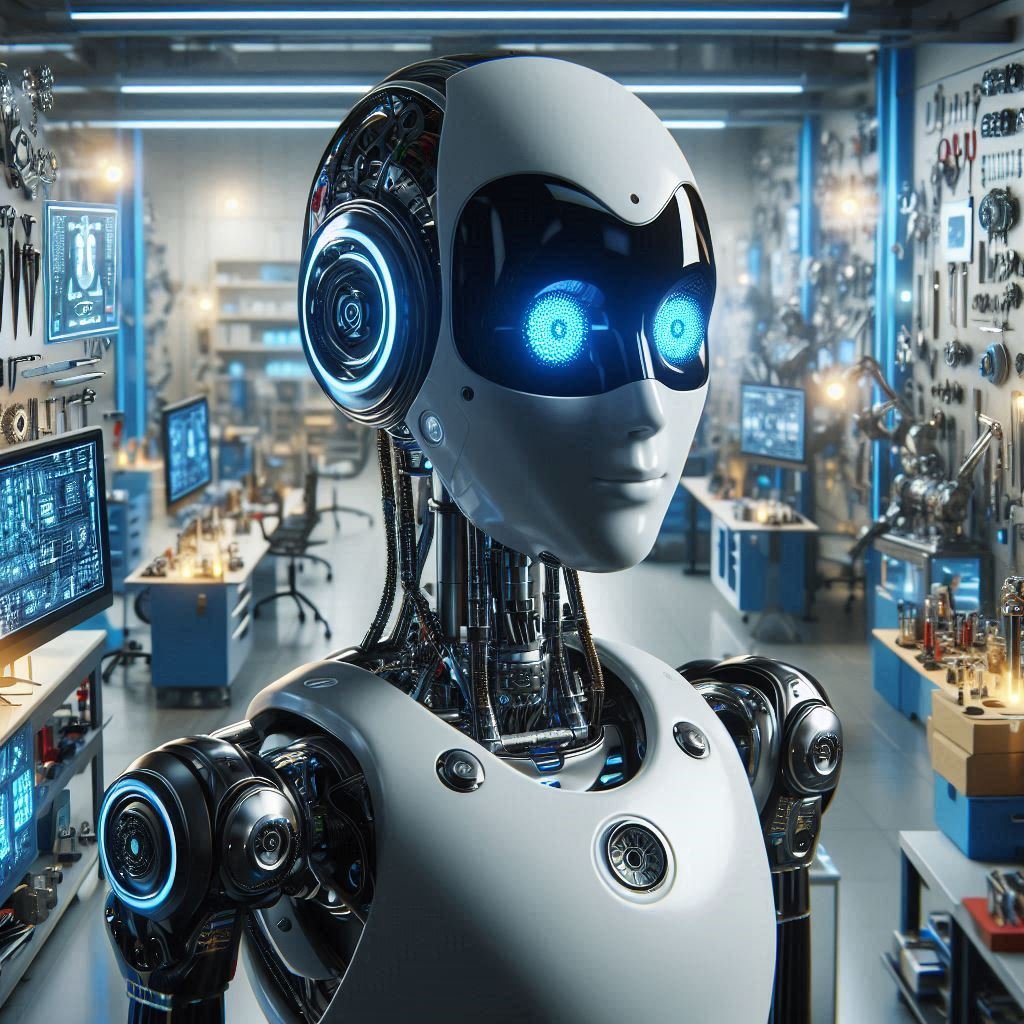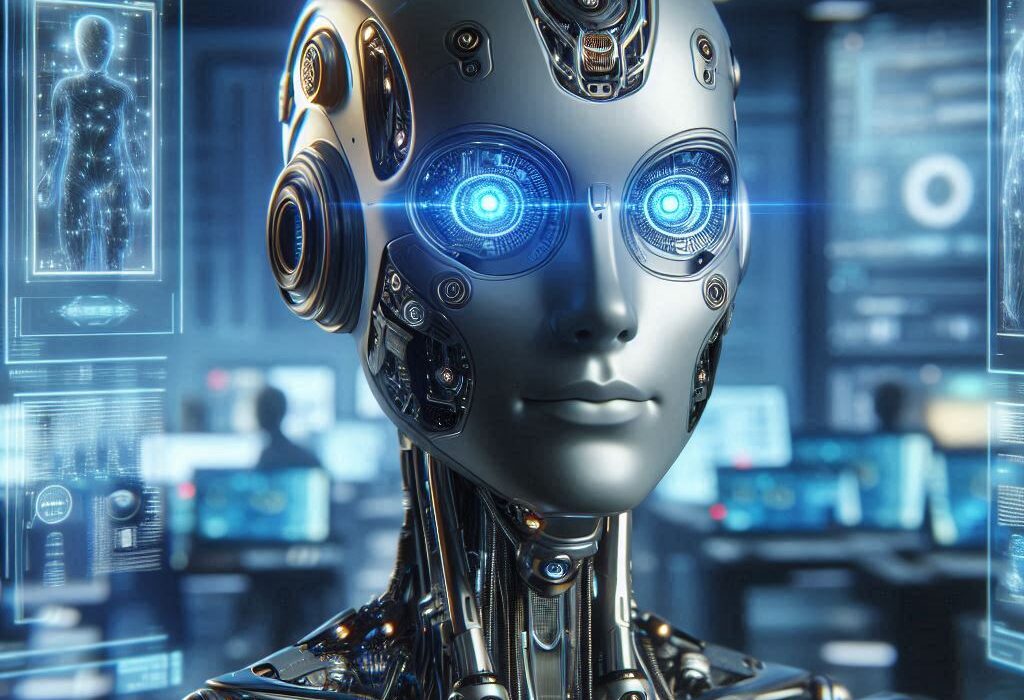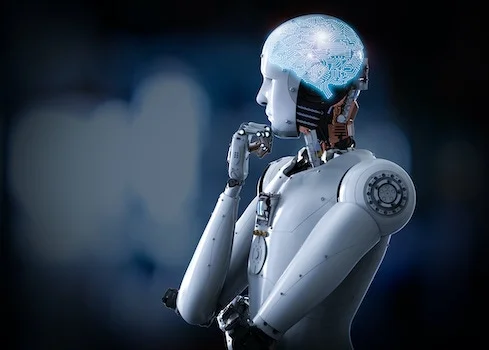For centuries, humankind has dreamed of creating artificial minds—mechanical servants that could think, reason, and perhaps even feel. This dream has taken many forms, from ancient myths of intelligent automatons to modern science fiction’s visions of sentient robots. But it was only in the 20th century, with the advent of electronic computing, that the dream began transforming into reality. Today, artificial intelligence, or AI, permeates our daily lives—from voice assistants and search engines to self-driving cars and medical diagnostics. Yet this powerful technology is the result of decades of research, debate, setbacks, and astonishing breakthroughs.
The history of artificial intelligence is not just the story of computers growing smarter. It is also the story of human curiosity, of mathematicians, scientists, philosophers, and engineers trying to understand intelligence itself—what it means to think, to learn, to adapt. It is a history shaped by wars and ethics, by competition and cooperation, by philosophical dilemmas and extraordinary creativity.
This article will take you on a journey through the rich and fascinating history of AI, from ancient mechanical visions to the cutting-edge neural networks of today. Along the way, we’ll explore the key ideas, people, technologies, and moments that brought artificial intelligence out of science fiction and into our living rooms, workplaces, and futures.
Ancient Visions and Mechanical Minds
Long before the term “artificial intelligence” was coined, humans were imagining lifelike machines. Ancient myths are filled with stories of mechanical beings. In Greek mythology, Hephaestus, the god of technology, created golden automatons to serve the gods. The legend of Talos, a bronze robot who guarded the island of Crete, is one of the earliest known conceptions of an artificial being.
In the third century BCE, the Greek engineer Ctesibius built water-powered automatons—mechanical devices capable of mimicking human actions. In medieval Islamic civilization, inventors like Al-Jazari designed intricate clockwork mechanisms that performed tasks such as playing music or pouring drinks. These devices were marvels of engineering, but they lacked intelligence—they followed preset instructions without adapting or learning.
During the Renaissance, mechanical thinking gained momentum. Leonardo da Vinci sketched plans for a robotic knight, and philosophers began to consider the idea of mechanical reasoning. Descartes described the human body as a kind of machine, raising profound questions about the boundary between life and mechanism. The seeds of AI were being planted, not in silicon, but in philosophy and clockwork.
The Birth of Modern Computing and Logical Thinking
The true foundations of artificial intelligence were laid in the 19th and early 20th centuries, with the development of formal logic and the concept of computation. One of the most influential figures was George Boole, whose work in the 1840s established Boolean algebra—the mathematical basis for binary logic, the language of computers.
Later, Charles Babbage, often called the “father of the computer,” designed the Analytical Engine—a mechanical general-purpose computer. Although never completed in his lifetime, the design featured key elements of modern computing, including memory and a processing unit. Ada Lovelace, his collaborator, is often credited as the first computer programmer. She also speculated that a machine might one day compose music or process language—an eerie prediction of AI’s future.
In the 20th century, the theoretical groundwork for AI was further developed by thinkers like Kurt Gödel and Alan Turing. Gödel’s incompleteness theorems revealed the limitations of formal systems, while Turing’s 1936 paper introduced the concept of the universal machine—a theoretical construct capable of simulating any other machine. This “Turing Machine” is the blueprint for all modern computers.
In 1950, Turing published a revolutionary essay, “Computing Machinery and Intelligence,” in which he posed the now-famous question: “Can machines think?” To explore this, he proposed the “Imitation Game,” now known as the Turing Test—a method of determining whether a machine can exhibit behavior indistinguishable from a human. With this, the philosophical foundations of artificial intelligence were officially laid.
The 1950s: The Dawn of Artificial Intelligence
The term “artificial intelligence” was officially born in the summer of 1956, at a landmark conference at Dartmouth College in New Hampshire. Organized by John McCarthy, Marvin Minsky, Claude Shannon, and Nathaniel Rochester, the Dartmouth Conference brought together a small group of researchers who believed that “every aspect of learning or any other feature of intelligence can in principle be so precisely described that a machine can be made to simulate it.”
This bold vision launched the field of AI research. In the years that followed, early programs demonstrated the potential of intelligent machines. Allen Newell and Herbert Simon created the Logic Theorist in 1955, a program capable of solving mathematical theorems. It was followed by the General Problem Solver (GPS), designed to mimic human problem-solving strategies.
During this era, optimism was rampant. Many researchers believed that human-level AI was just a few decades away. Computers were taught to play games like chess and checkers, to solve puzzles, and even to process natural language in basic ways. The 1950s and early 1960s were marked by a heady sense of possibility—AI seemed to be progressing rapidly.
The 1960s–1970s: Early Achievements and the First AI Winter
By the 1960s, AI research was booming, with new funding from governments and military agencies. Projects like ELIZA, developed by Joseph Weizenbaum at MIT, mimicked human conversation using simple pattern-matching techniques. ELIZA’s simulation of a Rogerian therapist fascinated users, even though it had no true understanding of language.
At Stanford, John McCarthy developed LISP, a programming language tailored for AI, which would remain influential for decades. Researchers also developed programs for understanding geometry, language translation, and robotics. Shakey the Robot, built at Stanford Research Institute in the late 1960s, was one of the first robots capable of navigating its environment using a combination of sensors and logic.
Yet the excitement began to wane as researchers confronted the limitations of their methods. Real-world problems proved far more complex than early systems could handle. Language processing was stymied by ambiguity and context. Game-playing programs hit computational limits. And expert systems, while useful in narrow domains, struggled to generalize knowledge.
Funding agencies, particularly the U.S. government, grew skeptical. In the 1970s, AI entered its first major slump—later dubbed the “AI Winter.” Projects were defunded, interest declined, and the dream of intelligent machines seemed to fade into the background. But while the hype cooled, dedicated researchers continued working quietly on the fundamental challenges of intelligence.
The 1980s: The Rise of Expert Systems and a Second Boom
In the 1980s, AI experienced a resurgence, driven by the rise of “expert systems”—software that mimicked the decision-making abilities of human specialists. One of the most famous was XCON, used by Digital Equipment Corporation to configure computer systems. Expert systems were adopted in fields like medicine, engineering, and finance, offering rule-based solutions to complex problems.
These systems relied on vast databases of “if-then” rules, carefully encoded by human experts. They performed well in narrowly defined tasks, and for a time, they gave AI a practical edge in the business world. AI labs expanded, investment surged, and expectations were again on the rise.
Yet the limitations of expert systems soon became clear. They were brittle, inflexible, and difficult to maintain. Adding new rules often led to conflicts, and the systems struggled in dynamic or uncertain environments. As the hype outpaced the results, a second AI Winter arrived in the late 1980s and early 1990s. Once again, funding dried up, and AI was branded as a failed promise.
The 1990s: Knowledge Representation, Robotics, and AI in Games
Despite the setbacks, the 1990s saw significant progress in several areas. Researchers made advances in knowledge representation—how to encode facts and rules about the world in ways machines could use. Meanwhile, AI-driven robotics matured. Mobile robots like the robot dog AIBO and NASA’s Mars rovers used AI to navigate complex environments.
In 1997, a watershed moment occurred when IBM’s Deep Blue defeated world chess champion Garry Kasparov in a six-game match. The victory demonstrated that AI could outperform humans in specific intellectual domains, given enough computing power and well-defined rules. While Deep Blue relied on brute-force search rather than learning, it was a public triumph that rekindled interest in AI’s potential.
AI was also making its way into video games, search engines, and recommendation systems. The seeds of modern machine learning were being planted, even as few outside the research community took notice.
The 2000s: The Quiet Revolution of Machine Learning
The 2000s witnessed a quiet revolution. As computing power grew and data became more abundant, a new approach began to dominate: machine learning. Unlike earlier rule-based systems, machine learning relied on algorithms that could detect patterns in data and improve over time. Rather than being explicitly programmed, these systems learned from experience.
Support vector machines, decision trees, and Bayesian networks became popular techniques. Researchers also revisited neural networks—models inspired by the brain’s structure, which had been sidelined for years due to technical limitations. These networks began to show promise, particularly in tasks like image recognition and speech processing.
A key breakthrough came in 2006, when Geoffrey Hinton and his colleagues introduced a method called “deep learning,” which allowed multi-layered neural networks to be trained more effectively. Suddenly, AI systems began to rival human abilities in tasks long considered too difficult—such as identifying objects in images or transcribing spoken language.
The 2010s: The Deep Learning Explosion
The 2010s marked a golden era for AI, driven by deep learning and the availability of massive datasets and powerful graphics processing units (GPUs). Companies like Google, Facebook, Microsoft, and Amazon poured resources into AI research, resulting in stunning breakthroughs.
In 2012, a deep neural network trained on the ImageNet dataset achieved unprecedented accuracy in visual object recognition. The world took notice. Soon, AI was powering personal assistants like Siri and Alexa, real-time translation services, facial recognition software, and autonomous vehicles.
In 2016, another major milestone was achieved when DeepMind’s AlphaGo defeated the world champion Go player Lee Sedol. Go, with its vast complexity, had long been considered beyond the reach of AI. AlphaGo combined deep learning with reinforcement learning, showcasing a new level of strategic intelligence.
AI research also expanded into natural language processing. Systems like GPT-2 and later GPT-3, built on transformer architectures, demonstrated remarkable abilities to generate coherent text, answer questions, and even write poetry. AI had become creative, conversational, and surprisingly human-like.
The 2020s: AI in the Real World and Ethical Reckonings
In the 2020s, artificial intelligence moved from research labs into the fabric of daily life. AI-powered tools assist doctors in diagnosing diseases, help farmers optimize crops, and enable scientists to discover new drugs. Self-driving cars are undergoing real-world testing, and AI systems filter online content, personalize feeds, and power financial systems.
Yet with great power comes great responsibility. Concerns about bias in AI systems, job displacement due to automation, surveillance, and the misuse of AI for misinformation and deepfakes have sparked widespread debate. The call for ethical AI, transparency, and regulation has grown louder.
Researchers and policymakers are grappling with tough questions: How do we ensure fairness and accountability? Who is responsible when AI makes a mistake? Can machines be held ethically liable? These questions go beyond technology, touching the very core of human values and society.
Conclusion: From Mechanical Myths to Digital Minds
The history of artificial intelligence is a tale of visionaries and skeptics, of soaring ambitions and painful realities, of miraculous breakthroughs and sobering lessons. What began as a dream of thinking machines has become a defining challenge of the 21st century—reshaping science, economics, art, and ethics.
We stand at a turning point. The machines we have built now assist us in making decisions, predicting outcomes, even creating art and music. They may soon teach our children, drive our cars, and perhaps, one day, become conscious collaborators. Whether this future brings liberation or risk depends on how wisely we proceed.
But one thing is clear: AI is no longer just a field of study—it is a central force shaping the future of humanity. As we continue to build, refine, and question the intelligence we have set in motion, we are not just creating new tools. We are defining what it means to be intelligent—and what it means to be human.






